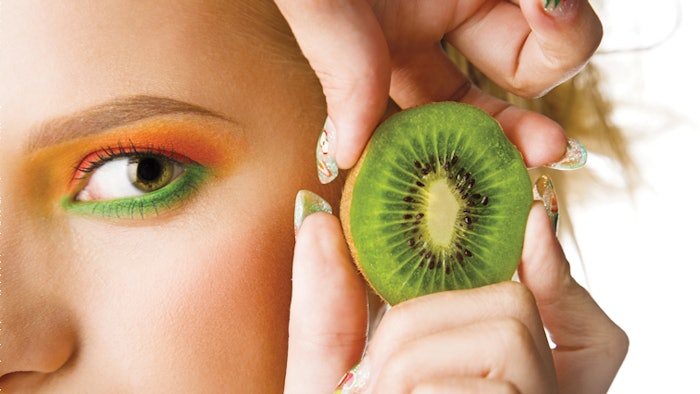
Read the complete article in the free July/August 2022 digital magazine...
The cosmetic industry has, for some time, witnessed growing interest in all aspects of sustainability. This is a broad concept, open to multiple interpretations. The most commonly accepted definition derives from the 1987 report by Bruntland, “Our Common Future,” stating it is “. . . development that meets the needs of the present without compromising the ability of future generations to meet their own needs.” It therefore encompasses the environment, society and economics.1
According to a study by the Personal Care Products Council, 68% of consumers believe that product sustainability is important when making a purchase, while 66% are willing to spend more on products declaring a positive environmental and social impact. The demand from consumers for greater transparency regarding the products they buy is also growing; this includes more information about the ingredients used in the formulations for not only their function and safety, but also on their origin and method of preparation.2
In this scenario, the upcycling trend has taken hold, using waste materials mostly from the foods industry to obtain raw materials and active ingredients that can be used in the cosmetic field. From a broader perspective, the final goal is so-called zero waste, which is defined as using all resources by means of responsible production, consumption, reuse and recovery of products, packaging and materials without burning them, and with no discharges to land, water or air that might threaten the environment or human health.3
The strategies employed by the cosmetic industry are somewhat different. They include sourcing ingredients from little-valued waste in which a higher value is returned—meaning using production methods that minimize waste generation and/or creating reusable, easily recyclable packaging or zero-packaging products.4
Defining Upcycling
The term upcycling was originally coined by Reiner Pilz. In an interview, Pilz said, “Recycling I call … downcycling. They smash bricks, they smash everything. What we need is upcycling where old products are given more value, not less.”5
From these views, we can distinguish three different concepts:
- Recycling: The transformation of products or waste initially destined for destruction into similar or equivalent products;
- Downcycling: Reusing waste objects or materials into something of lesser value than the original; and
- Upcycling: Reusing waste objects or materials in such a way as to create products of higher quality or value than the original.
These practices are used widely in the fashion and design sector—but upcycling is not a new concept for the cosmetic industry. What is new is the growing interest in recovering waste from other processes to obtain cosmetic ingredients, which is closely connected to the demand for sustainable products.
As stated, most of the waste sourced for cosmetics is derived from the foods industry, which can provide concentrated extracts of active substances and functional ingredients such as scrubbing agents, colorants and texturizing powders. In fact, it is estimated that food waste constitutes about 17% of the entire food production process, equal to 931 million tons per year—61% from families, 26% from catering and 13% from retail.6, 7
Horticulture, in particular, represents about 38% of world agricultural production. It creates large portions of food waste such as citrus peel, pomace and olive oil, and sugarcane bagasse, which come from processes such as pulping, peeling, filtration and blanching.8 A wide range of food by-products such as seeds, stems, leaves, peels and unused pulp could be potentially useful to develop sustainable raw materials. For the recovery of these waste materials, it is necessary to find the best and most environmentally friendly extraction technique that is capable of obtaining the maximum yield.
Extraction methods may vary depending on the type of compound to be extracted; factors such as the part of the plant, sample preparation, temperature, pressure and type of solvent strongly influence the process.9 Conventional extraction techniques as well as innovative systems have been developed and include:
- Soxhlet extraction, especially for the extraction of lipophilic compounds;
- Hydro-distillation, for essential oils and other bioactive non-heat-labile components; and
- Maceration, a low-cost technique suitable for heat-sensitive and very volatile compounds.
- Traditional methods often have limitations such as difficulties in obtaining high levels of purity; the use of expensive solvents; long extraction times; possible degradation of thermolabile compounds; and low extraction selectivity.10 Among the techniques developed to address these limitations are:
- Microwave-assisted extraction, for the rapid extraction of bioactive compounds, especially polyphenols. This is considered a green technique since it reduces the use of organic solvents;11
- Pulsed electric field, characterized by a reduced use of energy and consequent reduced environmental impact;12
- Enzyme-assisted extraction, considered an eco-friendly method to extract oils and bioactive compounds because water is used as the solvent in place of organic solvents;13
- Liquid-liquid extraction (LLE), which can be utilized at room temperature to avoid compound degradation;14 and
- Solid-liquid extraction, also called leaching, which is characterized by higher repeatability than LLE.15
Upcycled Ingredients
As noted, a wide range of food waste can potentially be used to develop sustainable cosmetic ingredients, especially fruit, vegetal and grain waste. The main bioactive compounds present in these are polyphenols, fatty acids, minerals and vitamins.16 One example of food waste that has been used for some time to obtain derivatives for cosmetics is grape by-products (Vitis vinifera).
Grape: Pressing grapes during the winemaking process results in a mixture of pulp, skin and seeds also known as pomace. The pomace is often used for: producing Italian grappa; the distillation of ethanol and extraction of tartaric acid; purification of dyes; and preparation of soil fertilizers.17 From the pomace, it is possible to obtain extracts that are rich in phenolic compounds such as phenolic acids, flavonoids and proanthocyanins, and lipophilic compounds such as resveratrol, lycopene, ellagic acid and especially carotenoids. ...











